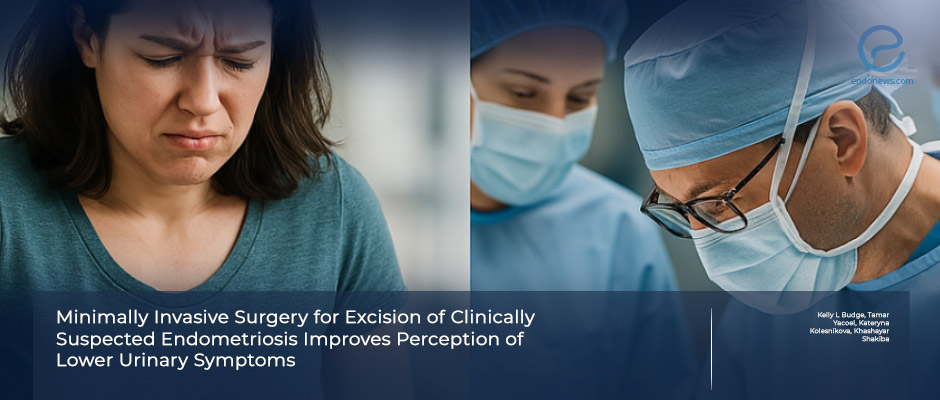Urinary Symptom Relief Following Excision of Suspected Endometriosis
Mar 27, 2025
Excision surgery leads to a reduction in lower urinary tract symptoms in patients with suspected endometriosis.
Key Points
Highlights:
- Lower urinary tract symptoms such as urgency, frequency, and nocturia are commonly underrecognized in patients with endometriosis.
- Excision surgery can improve lower urinary tract symptoms in patients with suspected endometriosis even in the absence of visible bladder lesions.
Importance:
- Symptoms often misattributed to urinary infections, or ignored by both patients and providers.
- Endometriosis may affect pelvic autonomic nerves (e.g., inferior hypogastric plexus), contributing to urinary dysfunction.
- Current hormonal treatments often fail to address lower urinary tract symptoms.
What’s done here:
- This is a retrospective cohort study in patients with suspected endometriosis who had minimally invasive excision surgery by a single urogynecologist
- Pre- and postoperative LUTS assessed using standardized questionnaires over a follow-up period of 1–25 months.
- Histopathology confirmed endometriosis in 69% of cases.
Key results:
- More than 90% had LUTS before surgery; symptoms significantly improved postoperatively.
- Among pathology-positive patients, significant symptom improvement included urgency, frequency, nocturia, incomplete emptying and frequent infections.
- Only 2.1% had bladder lesions — yet LUTS improved, suggesting pelvic nerve involvement.
- Greatest symptom relief observed in patients with pelvic sidewall lesions.
Limitations:
- Small, single-center, retrospective design with no control group, questionnaire-based nature may be limitation. Concurrent procedures such as hysterectomy may confound outcomes.
Lay Summary
Lower urinary tract symptoms such as frequent urination, urgency, and waking up at night to urinate, are often overlooked or dismissed in patients with endometriosis. A new study published in the Journal of Minimally Invasive Gynecology highlights that these symptoms may be more common than previously thought — and importantly, that they can improve significantly following minimally invasive surgery to remove suspected endometriosis lesions, even when no visible lesions are found on the bladder.
To explore this connection, a research team led by Dr. Khashayar Shakiba at Hackensack University Medical Center conducted a retrospective study involving 71 women with suspected endometriosis who underwent laparoscopic excision surgery between 2020 and 2021. The suspicion of endometriosis was based on symptoms includingpainful periods, pelvic pain, painful intercourse, urinary dysfunction, and painful bowel movements. Between one and 25 months after surgery, patients completed a questionnaire assessing changes in the severity of their urinary symptoms, which was compared to their preoperative assessments.
Of the 71 patients, 54 completed the follow-up questionnaire, and 64 had reported lower urinary tract symptoms before surgery. Among those with urinary complaints, symptoms significantly decreased following the operation, with an average follow-up time of 9.4 months.
Pathology confirmed endometriosis or adenomyosis in approximately 82% of participants, and among those with confirmed disease and preoperative lower urinary tract symptoms, the majority experienced a significant improvement in symptoms.
Interestingly, while most patients had endometriosis lesions on the peritoneum, only one had a lesion involving the bladder. This suggests that urinary symptoms in endometriosis may be due to inflammation or irritation of pelvic nerves, rather than direct bladder involvement.
The study concludes that surgical excision of suspected endometriosis may offer meaningful relief for urinary symptoms — a finding that could reshape how clinicians approach voiding dysfunction in this patient population.
Research Source: https://pubmed.ncbi.nlm.nih.gov/39929257/
bladder endometriosis lower urinary tract symptoms excision surgery

